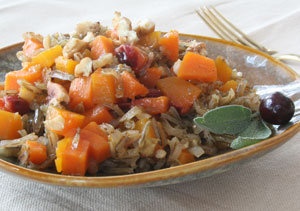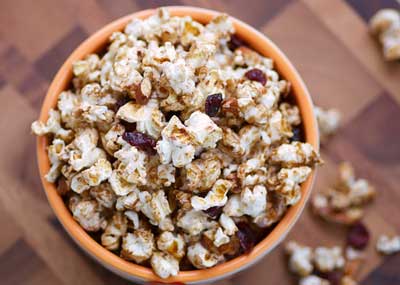 Last month I cooked a Thanksgiving dinner and a Christmas dinner. The only thing missing was a crowd around the table. Why the feast? I was developing recipes for Roast Turkey, Brown Sugar and Mustard Baked Ham, Maple Mashed Sweet Potatoes, Lightened Green Bean Casserole, a Holiday Salad (with pomegranate seeds and pepitas) and Harvest Apple Stuffing. I also created some recipes using leftover ham and turkey and for a few fun things you can make for the holidays to give as gifts like Peppermint Bark and Chocolate Chip Cookies in a Jar. The recipes were for Grocery Outlet and will be featured in a brochure for customers.
Last month I cooked a Thanksgiving dinner and a Christmas dinner. The only thing missing was a crowd around the table. Why the feast? I was developing recipes for Roast Turkey, Brown Sugar and Mustard Baked Ham, Maple Mashed Sweet Potatoes, Lightened Green Bean Casserole, a Holiday Salad (with pomegranate seeds and pepitas) and Harvest Apple Stuffing. I also created some recipes using leftover ham and turkey and for a few fun things you can make for the holidays to give as gifts like Peppermint Bark and Chocolate Chip Cookies in a Jar. The recipes were for Grocery Outlet and will be featured in a brochure for customers.
Having never hosted my own holiday dinners for 10+ people, I learned a lot! I shopped for as much of the dishes as possible at Grocery Outlet, after doing my planning and creating shopping lists. Of course making lists of what you need to buy is important, but being open to swapping out ingredients if you find something delicious and on sale is a good idea too. I was planning to use dried cranberries in the salad but found pomegranates were a better choice at the time.
When it comes to holiday meals, the main thing is to have an enjoyable time with your family and guests. If that means buying a pie instead of baking one, so be it! Concentrate on putting your energy into the things that matter most to you don't make yourself crazy trying to do everything. Most importantly? Have fun!

 Thanksgiving may be my favorite holiday. Families gather. And as they surround the dining table they celebrate and give thanks for all blessings, including the bountiful meal before them. When my mom was living, she prepared most of the Thanksgiving meal herself.
Thanksgiving may be my favorite holiday. Families gather. And as they surround the dining table they celebrate and give thanks for all blessings, including the bountiful meal before them. When my mom was living, she prepared most of the Thanksgiving meal herself. You've heard of Thanksgiving stuffing, Thanksgiving pumpkin pie and Thanksgiving turkey. But have you heard of Thanksgiving popcorn? Of course you haven't. That's because I just created it.
You've heard of Thanksgiving stuffing, Thanksgiving pumpkin pie and Thanksgiving turkey. But have you heard of Thanksgiving popcorn? Of course you haven't. That's because I just created it. It started simply enough: the other half felt the need to bake. For me, well, I’m no baker and the urge to do so is akin to washing my car or preparing receipts for tax purposes. I’ll do it but only begrudgingly. But like many things I’m fully prepared to participate in the end result, and in this case it was a pie of monstrous proportions.
It started simply enough: the other half felt the need to bake. For me, well, I’m no baker and the urge to do so is akin to washing my car or preparing receipts for tax purposes. I’ll do it but only begrudgingly. But like many things I’m fully prepared to participate in the end result, and in this case it was a pie of monstrous proportions. Lately, we have spent a lot of time contemplating the ways to explain Thanksgiving to Dane. We are diving into the stories of Pilgrims and Indians, but what I deeply want to convey to her this year, are the two sides of thankfulness - to give thanks for what we receive, while also finding joy in giving, so that we may create thankfulness in the hearts of others. I tend to teach her in ways that are tangible, so when I thought of our activities this week, the Thanksgiving feast came to mind.
Lately, we have spent a lot of time contemplating the ways to explain Thanksgiving to Dane. We are diving into the stories of Pilgrims and Indians, but what I deeply want to convey to her this year, are the two sides of thankfulness - to give thanks for what we receive, while also finding joy in giving, so that we may create thankfulness in the hearts of others. I tend to teach her in ways that are tangible, so when I thought of our activities this week, the Thanksgiving feast came to mind. 